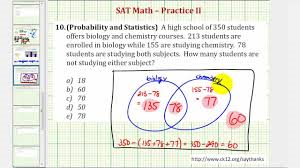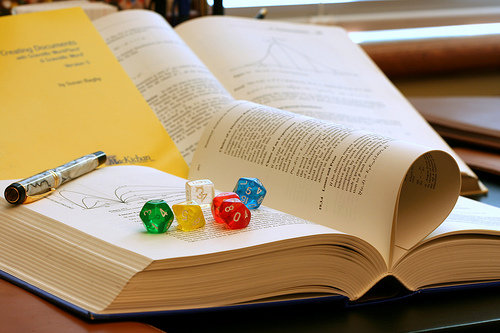Overview
Probability and statistics concepts are tested as one of the strands of SAT Mathematics. Topics include measures of central tendency such as mean, median, and mode; elementary probability; and geometric probability. The test doesn’t contain long calculations of standard deviation or other statistical measurements.
Why Statistics?
Probability and statistics concepts are often combined with data analysis, because some of the most common ways that data are measured mathematically involve statistics. College courses in education, the sciences, and humanities often include statistical concepts. In particular, advanced methods of statistical analysis are key to psychological and sociological research. Many articles in peer-reviewed journals demand an understanding of measurement, evaluation, and analysis to follow the arguments.
Measures of Central Tendency
Common measures of central tendency include the mean, median, and mode. The arithmetic mean is simply the average; the median is the middle value in a list of scores when the numbers are arranged from largest to smallest, or from smallest to largest; and the mode is the most frequently occurring value in a set of scores. When a distribution is normal, such as the overall scores of a large group of students on the SAT, the mean, median, and mode are all the same. There may also be questions on the SAT regarding weighted averages, when groups do not have the same number, average of algebraic expressions, and using averages to find a particular value when one is missing.
Elementary Probability and Geometric Probability
Students are often asked to determine the percentage of times an event may occur. If an event never happens, its probability is zero. If an event always happens, its probability is 1. Therefore, probabilities are expressed as a decimal or fraction between 0 and 1, or as a percentage. Events may be independent or dependent. Some probability questions may concern geometric figures. For example, a smaller circle may be inside a larger circle, and students may be asked to choose the probability that a point in within the area of the smaller circle. The radius of each circle is given, so the student compares the areas.
Strategies for Test Preparation
Probability, statistics, and measurement questions are frequent within other math classes in middle school and high school, as well as any class that describes quantitative research. As in any other math strand of the SAT, familiarity and practice lead to confidence. Before the test, notice problems that involve statistical analysis in everyday life, such as in sports, weather, or politics. Use practice questions to determine strong and weak areas during preparation, and ask teachers and tutors to help you clarify any weak areas. During the test itself, use the test booklet to draw pictures, underline terms, and eliminate distractors.
Interested in SAT tutoring services? Learn more about how we are assisting thousands of students each academic year.
SchoolTutoring Academy is the premier educational services company for K-12 and college students. We offer tutoring programs for students in K-12, AP classes, and college. To learn more about how we help parents and students in Augusta, GA: visit: Tutoring in Augusta, GA






